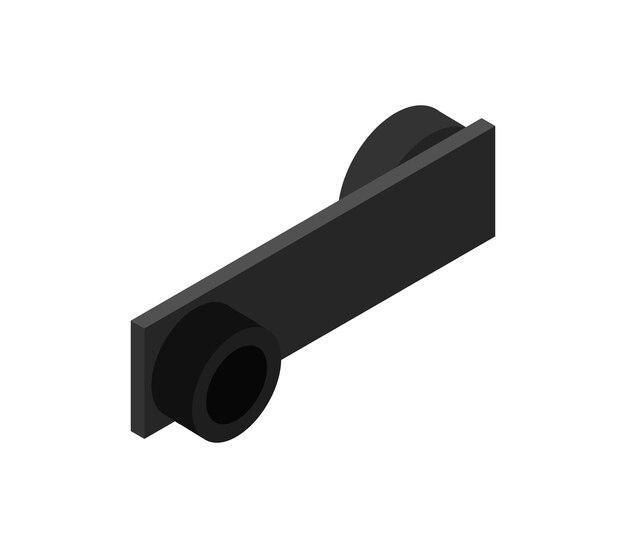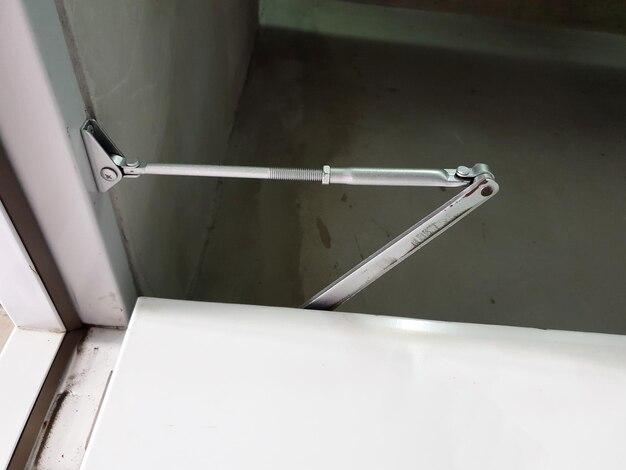Do all toilets sit the same distance from the wall? Can a toilet be moved a few inches? These are common questions that arise when considering a bathroom renovation or rearrangement. Whether you’re updating your bathroom layout or adjusting the position of fixtures, the ability to relocate a toilet can offer more flexibility in design. In this blog post, we’ll explore the process of moving a toilet closer to the wall and address some of the frequently asked questions related to toilet relocation.
When it comes to moving a toilet, there are a few important factors to consider. One of the main concerns is the plumbing and drainage system, as relocating a toilet involves making adjustments to the existing pipes. It’s also essential to ensure the new position of the toilet meets both functional and aesthetic requirements. Additionally, understanding the approximate cost and level of difficulty associated with toilet relocation can help you make an informed decision. So, let’s dive into the details and learn how to move a toilet closer to the wall effectively.
Moving Your Toilet Closer to the Wall
So, you’ve finally decided that your toilet should cozy up a bit closer to the wall. Well, don’t worry, my friend, because I’ve got you covered. In this subsection, I’ll take you through some simple steps on how to move a toilet closer to the wall without causing any unnecessary plumbing mishaps. So grab your tool belt, put on your DIY hat, and let’s get down to business!
Assess the Situation: No Toilet Olympics, Please
Before you start flexing your muscles to move that toilet, it’s essential to assess the situation. Check if your toilet’s existing setup allows for movement closer to the wall, and if there’s enough space to, you know, actually, do your business comfortably. Measure and double-check to ensure a smooth relocation process—no toilet Olympics here, my friend.
Shut Off the Water: We Don’t Want a Bathroom Flood
Water and electricity have one thing in common – they’re both great when they’re where they’re supposed to be, but havoc-wreaking when they’re not. To avoid a bathroom flood reminiscent of the Great Flood, you’ll need to shut off the water supply. Locate the shut-off valve, turn it clockwise, and voila! Water flow stopped, floods prevented, and a happy plumber you shall be.
Drain the Throne: Bid Adieu to the Water
With the water supply turned off, it’s time to rid your toilet of its aquatic contents. Start by flushing the toilet to drain any water from the tank and bowl. Next, use a plunger or a sponge to remove any stubborn remnants. You wouldn’t want a wet disaster while trying to move your toilet, right? So, dry that throne and ready it for relocation.
Unscrew and Disconnect: Breakup with the Existing Setup
Now, it’s time to part ways with your toilet’s current setup. Start by disconnecting the water supply line from the bottom of the tank. Unscrew the nuts that connect the toilet bowl to the floor, using a wrench or pliers. Carefully lift the toilet up and away from its previous position, nodding solemnly as you bid a farewell to the old bathroom configuration.
Make Adjustments: Enter the World of DIY Wizardry
Before installing your toilet in its new, closer-to-the-wall spot, it’s time to make a few adjustments. Measure the distance between the mounting bolts on the floor flange, and mark this distance on the floor behind the toilet. Use a drill to create new holes for the floor bolts, ensuring they match the measurements. You’ve officially entered the world of DIY wizardry!
Put on a New Wax Ring: Girly Accessories for your Toilet
To prevent your bathroom from becoming a damp swamp, you’ll need a thick and reliable wax ring. Place the new wax ring over the waste opening in the floor. Double-check that it’s centered and ready to seal your toilet’s bottom with a watertight embrace. Remember, this wax ring is the girly accessory your toilet can’t live without.
Time for a Reunion: Bring Back the Throne
With the new wax ring in place, it’s time to bring back the star of the show – your toilet. Carefully lower the toilet onto the wax ring, ensuring that the floor bolts go through the holes you drilled earlier. Once the toilet is in place, give it a gentle wiggle to secure a proper seal. You want your toilet to feel stable and confident, just like you.
Reconnect and Turn the Water On: Let the Flow Begin
Now that your toilet is back where it belongs, it’s time to reconnect the water supply line to the bottom of the tank. Make sure the connection is tight and secure. Then, with bated breath and a sense of accomplishment, turn the water supply back on. Listen to the soothing sounds of water flowing, knowing that soon, your toilet will be ready to take on its duties once again.
Test it Out: The Final Judgment
Congratulations, my friend! You’ve successfully moved your toilet closer to the wall like a seasoned DIY guru. But wait, there’s more to be done. Before fully celebrating your newfound expertise, it’s time for the final judgment. Give your toilet a few trial runs by flushing it, checking for any leaks, and ensuring all is functioning smoothly. Take a bow, relish in your victory, and thank yourself for a job well done.
Moving a toilet closer to the wall might sound like a daunting task, but armed with the right knowledge and a sprinkle of humor, you can conquer anything. So go forth, move that toilet like a pro, and bask in the glory of a bathroom rearranged.
FAQ: How To Move A Toilet Closer To The Wall
Do all toilets sit the same distance from the wall
No, toilets can vary in the distance they sit from the wall. It depends on the specific design and installation of the toilet.
Can a toilet be moved a few inches
Yes, it is possible to move a toilet a few inches closer to the wall. However, it requires careful planning and knowledge of the plumbing system to ensure a successful relocation.
How do you relocate a toilet
To relocate a toilet, you will need to shut off the water supply, remove the toilet tank and bowl, disconnect the plumbing connections, and then reinstall the toilet in its new location. It is recommended to hire a professional plumber for this task to avoid any complications.
How do you fill the gap between toilet cistern and wall
To fill the gap between the toilet cistern and the wall, you can use an adjustable spacer or shims. These can be easily inserted to provide a secure and aesthetically pleasing finish.
How much does it cost to relocate a toilet
The cost of relocating a toilet can vary depending on various factors such as the complexity of the plumbing system, the distance of the relocation, and hiring a professional plumber. On average, the cost can range between $500 to $1500.
Is it difficult to relocate a toilet
Relocating a toilet can be a challenging task, especially if you’re not familiar with plumbing systems. It involves disconnecting and reconnecting the plumbing, ensuring proper alignment, and addressing potential issues. It is recommended to seek professional assistance to avoid any damage or complications.
Can you put a toilet anywhere in your house
In theory, you can install a toilet in any part of your house where there is proper plumbing infrastructure. However, practicality, convenience, and adherence to building codes must be considered when choosing the location for a toilet.
How close to the wall should a toilet be
The ideal distance between a toilet and the wall is usually around 15 inches. This provides enough space for comfortable sitting while ensuring proper alignment with the plumbing system.
Can you move a toilet to an inside wall
Moving a toilet to an inside wall is possible but challenging. It requires extensive plumbing work, including rerouting the waste pipe and vent stack. It is recommended to consult with a professional plumber to determine the feasibility and cost of such a project.
How far can a toilet be from the main stack
Ideally, a toilet should be located within six feet of the main stack, which is the vertical pipe that collects waste from various drains in the house. However, building codes may have specific requirements, so it’s essential to consult with a plumber to ensure compliance.
How far away should the toilet be from the vanity
The toilet should be placed at least 15 inches away from the edge of the vanity to provide enough space for comfortable seating. This distance ensures ease of use and avoids any potential restrictions.
Does a toilet have to be against a wall
No, a toilet does not have to be against a wall. However, placing it against a wall can provide stability and make plumbing connections more accessible. It also helps hide any exposed pipes or plumbing fixtures.
Can you switch a toilet and sink
Switching a toilet and sink is possible, but it can involve significant plumbing work. The waste and water supply lines would need to be rerouted, which may require professional assistance. It’s recommended to consult with a plumber to assess the feasibility and potential challenges of such a project.
Is it expensive to move a toilet in the UK
The cost of relocating a toilet in the UK can vary depending on factors such as the location, complexity of the plumbing system, and hiring a professional plumber. On average, the cost can range between £400 to £1200.
How far away from the wall is a toilet flange
The toilet flange, which connects the toilet to the waste pipe, should typically be positioned about 12 inches away from the finished back wall. This allows for proper alignment and ensures a secure connection.
How do you move a toilet from the wall to further
Moving a toilet further away from the wall requires rerouting the plumbing and adjusting the positioning of the waste pipe. It is a complex task that may involve opening up the floor and making significant adjustments to the plumbing system. Consulting with a professional plumber is highly recommended to ensure a successful and code-compliant relocation.
Remember, when it comes to moving a toilet closer to the wall, proper planning and professional assistance are crucial for a successful and hassle-free project.

